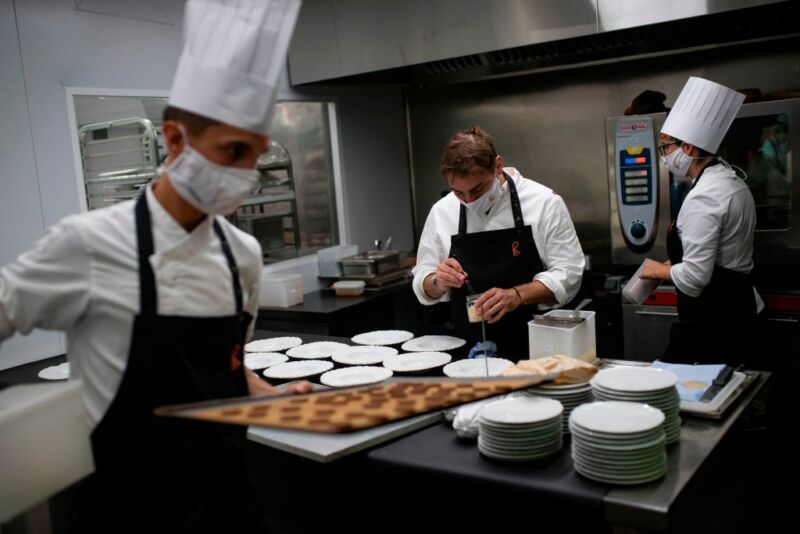Slow relaxation of COVID-19 rules helps push recurrence back

Enlarge / Spanish chef Jordi Roca prepares dishes at the "El Celler de Can Roca" restaurant in Girona on June 23, 2020, on the day it reopens after a national lockdown to stop the spread of the novel coronavirus. (credit: JOSEP LAGO / Getty Images)
Countries like the United States have never really gotten the pandemic under control, while others, like Brazil, haven't even slowed the pace of infections. But elsewhere, many countries that took dramatic action to limit the spread of COVID-19 have seen the rate of infections plunge, leaving them with the issue of how to successfully emerge from the restrictions they put in place.
One of those countries is Spain, where infections have dropped from a peak of over 9,000 a day in late March to only about 300 a day at present. Two researchers based in Barcelona (Leonardo Lopez and Xavier Rodo) decided to look at different ways Spain could have exited its restrictions while protecting future public health. After building their model, they set it loose on other countries, including the US. Their work lets us test what might happen if the immunity developed in those infected fades over time or the public's fear of the virus subsides after it's under control.
Lockdown vs. open upHow did Spain get cases in check? In part, by following the advice of public health experts. On March 29, it placed everyone in non-essential jobs on a strict lockdown. Two weeks later, with cases dropping, restrictions started being eased. But the easing was done cautiously, with a variety of restrictions being kept in place as cases continued to drop. Lopez and Rodo were interested in looking at how this reopening could be handled in a way that most effectively limits future returns of widespread infections.
Read 18 remaining paragraphs | Comments